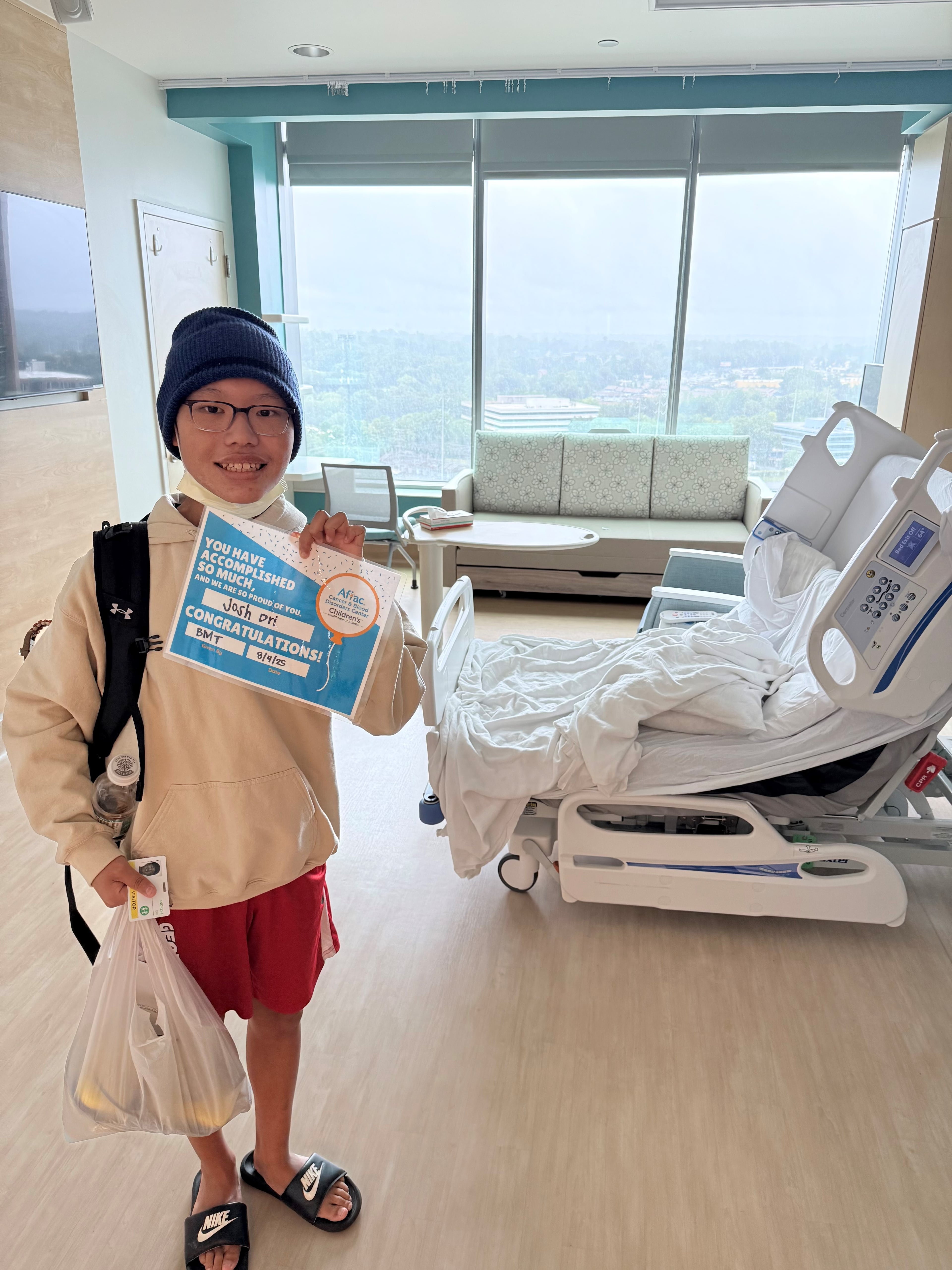New treatment gives Georgia teen a fresh start

For as long as he can remember, Josh Dri’s life has revolved around blood transfusions every three weeks and a strict regimen of medication three times a day. He lives with a rare genetic blood disorder that causes severe anemia — a condition that, without treatment, can lead to heart failure.
The 16-year-old North Forsyth High School sophomore said he now hopes to return to track and field and attend parties and other events without those constant disruptions following a life-changing procedure this summer at the Aflac Cancer and Blood Disorders Center of Children’s Healthcare of Atlanta.
“I want to make some more track meets and not take medicines every day and get poked,” Josh said about his cycle of blood transfusions and medication.

He’s the first patient in Georgia to receive a new gene therapy transplant for beta thalassemia. The disorder is caused by the body not producing enough of the normal beta protein in hemoglobin — a component of red blood cells — preventing the cells from forming correctly and carrying sufficient oxygen, according to Cooley’s Anemia Foundation.
The result is severe anemia, which leads to fatigue, poor growth, and other complications involving the liver, heart, and other organs. Josh’s form of the disorder requires extensive and ongoing medical care.
Bone marrow transplants previously offered the only potential cure for the disorder but require stem cells from a healthy matched sibling donor, according to Josh’s hematologist, Dr. Jeanne Boudreaux.
That type of transplant wasn’t an option in Josh’s case since his parents adopted him from an orphanage in China, where the disorder is more common, said Boudreaux, director of the Children’s Comprehensive Thalassemia Center.
Boudreaux described the new gene therapy treatment with its difficult and lengthy preparation in which millions of Josh’s bone marrow stem cells were removed and sent to a lab to be modified. The cells were treated with Zynteglo, the first gene therapy product approved by the U.S. Food and Drug Administration for those with transfusion-dependent beta thalassemia. There are about 1,300 to 1,500 people in the U.S. who fall in that category, according to Zynteglo maker bluebird bio.
The modification process, which takes about three to four months, involves inserting a normal beta hemoglobin gene into as many stem cells as would accept them and testing the outcome, Boudreaux explained.
After intense chemotherapy to help his body accept the modified cells, Children’s doctors reinfused them to produce the functional beta globin protein, Boudreaux said.
Josh’s mother, Alison, said the most difficult part of the procedure came while the stem cells repopulated and created healthy red and white blood cells and platelets.
“We waited for that to kick in, and 14 days after chemo, he lost all his hair,” Alison said. “He developed mouth sores to where he couldn’t swallow,” she recalled, adding that Josh received intravenous nutrition because he couldn’t eat or drink normally.
Alison said she and her husband, along with Josh, considered the physical demands of the process before agreeing to move forward.
“You know, that was the hardest part of the decision. Do you want to put your kid or, in this case, put yourself through this? We knew this was temporary, one or two months, and then after that, it was going to change his life and be worth it.”
From her medical perspective, Boudreaux said Josh’s case will benefit others in the future. “I think that this is just the first step in using gene therapy to cure various blood disorders like thalassemia and sickle cell disease.”
Doctors will continue to monitor Josh’s blood, initially a few times a week, tapering down over the first year “until we see that he has recovered,” Boudreaux said. “He will continue to be monitored for the next 15 years.” Still, she feels confident about the effectiveness of the procedure.
Recuperating after nearly two months in the hospital, Josh said, “I do not feel tired. I feel a lot of energy in me. I do not feel exhausted because of low hemoglobin.
“My pain only lasts for like two weeks, but the cure will last forever.”
Roni Robbins has been a journalist for 38 years. This is her second stint as a freelance reporter for the AJC. She also freelances for Medscape, where she was an editor. Her writing has appeared in WebMD, HuffPost, Forbes, NY Daily News, BioPharma Dive, MNN, Adweek, Healthline and others. She’s also the author of the award-winning novel, “Hands of Gold: One Man’s Quest to Find the Silver Lining in Misfortune.”


